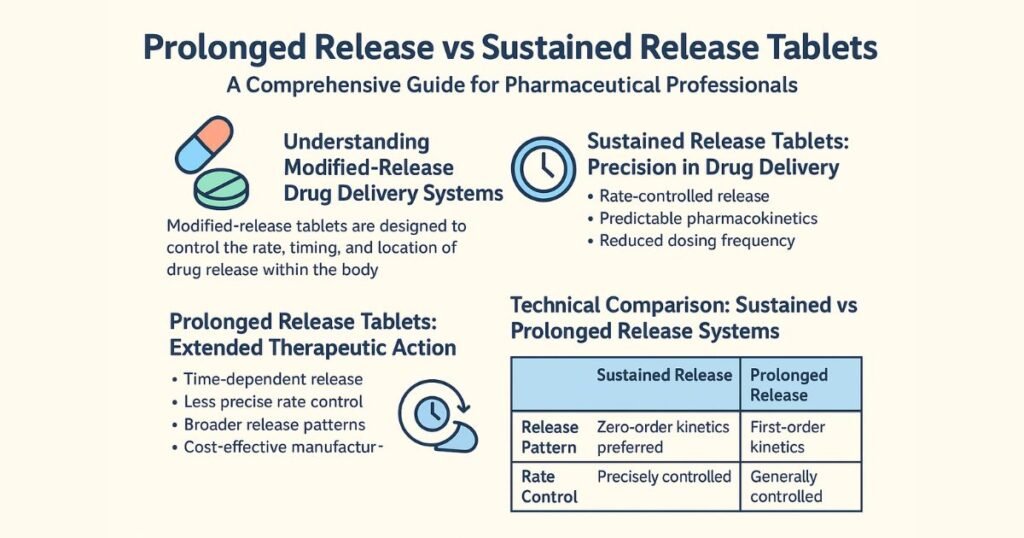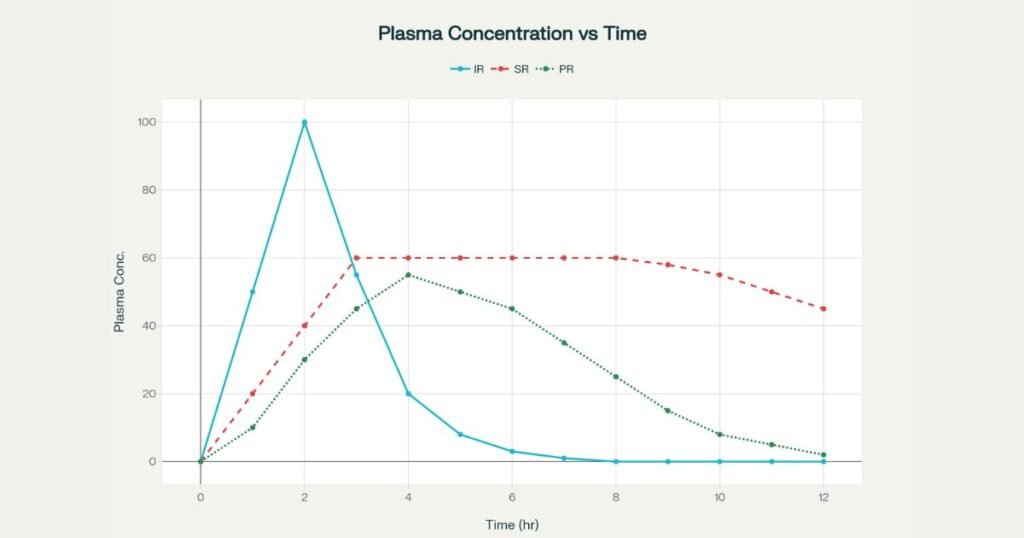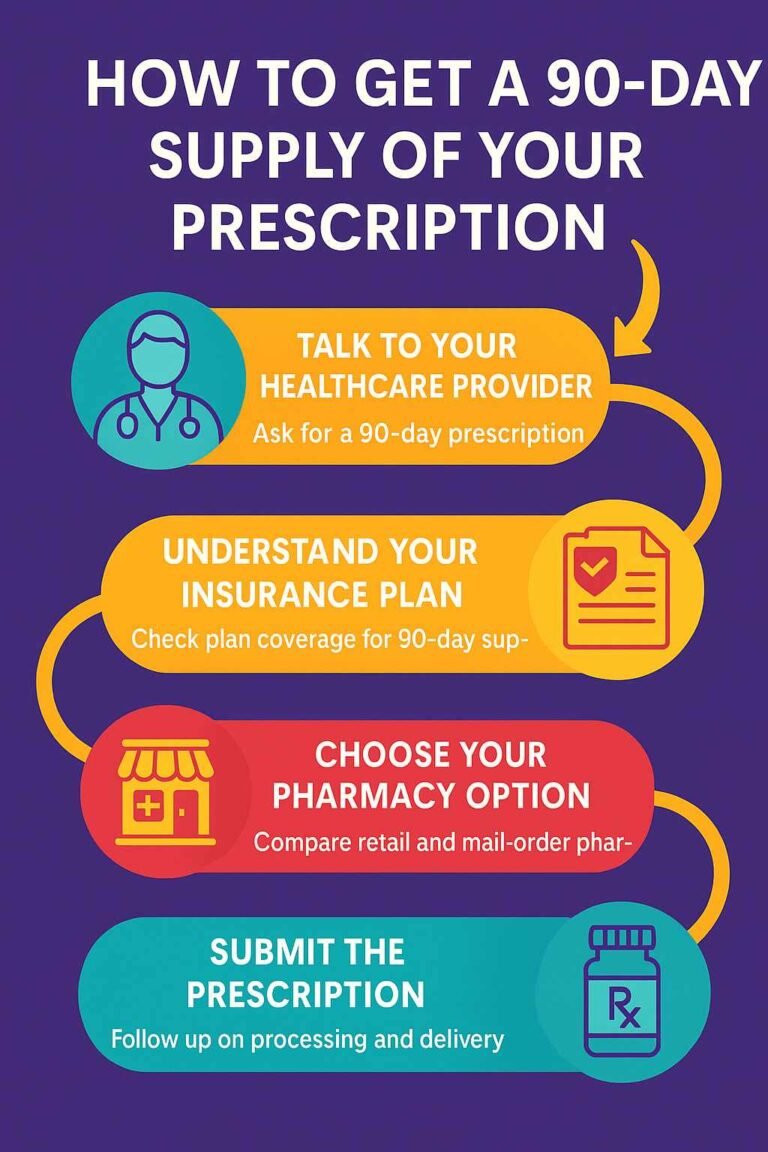Have you ever found yourself puzzled during regulatory submissions when encountering the terms “prolonged release” and “sustained release”? You’re not alone. These pharmaceutical terminologies often create confusion even among seasoned professionals, particularly when dealing with international regulatory frameworks where usage varies significantly.
This comprehensive guide will eliminate the ambiguity surrounding these modified-release formulations, providing you with crystal-clear distinctions that you can confidently apply in your daily pharmaceutical practice.

Understanding Modified-Release Drug Delivery Systems
The Foundation: What Are Modified-Release Tablets?
Modified-release tablets represent a sophisticated approach to drug delivery that goes beyond conventional immediate-release formulations. These systems are engineered to control the rate, timing, and location of drug release within the human body, optimizing therapeutic outcomes while minimizing adverse effects.
- Delayed-release systems (enteric-coated tablets)
- Extended-release systems (prolonged and sustained release)
- Targeted-release systems (site-specific delivery)
Sustained Release Tablets: Precision in Drug Delivery
Technical Definition and Mechanism
Sustained-release tablets are meticulously designed pharmaceutical dosage forms that deliver medication at a predetermined, controlled rate. The fundamental principle involves maintaining consistent drug plasma concentrations within the therapeutic window for extended periods, typically 12-24 hours.
Key Characteristics:
- Rate-controlled release: Mathematical precision in drug liberation
- Predictable pharmacokinetics: Consistent plasma levels
- Reduced dosing frequency: Enhanced patient compliance
- Minimized side effects: Avoiding peak-related adverse reactions
Manufacturing Technologies for Sustained Release
The pharmaceutical industry employs several sophisticated techniques:
Matrix Tablet Systems:
- Hydrophilic matrices using HPMC (Hydroxypropyl Methylcellulose)
- Hydrophobic matrices incorporating waxes and fatty acids
- Inert matrices with controlled porosity
Coating Technologies:
- Film-coating with rate-controlling polymers
- Multi-layered coating systems
- Osmotic pump mechanisms
Clinical Examples and Applications
Common Sustained-Release Formulations:
- Acebrophylline SR 200mg: Respiratory therapy with 12-hour duration
- Aceclofenac SR 200mg: Anti-inflammatory with reduced gastric irritation
- Paracetamol SR 1000mg: Extended analgesic coverage
- Progesterone SR 200mg: Hormonal therapy with sustained levels
- Lornoxicam SR 16mg: Long-acting anti-inflammatory treatment
Prolonged Release Tablets: Extended Therapeutic Action
Regulatory Perspective and Definition
From a regulatory standpoint, particularly in European Pharmacopoeia and ICH guidelines, “prolonged release” often serves as an umbrella term encompassing various extended-release mechanisms. However, in practical pharmaceutical development, prolonged-release systems typically emphasize duration of action rather than precise rate control.
Distinguishing Features
Prolonged Release Characteristics:
- Time-dependent release: Focus on extended duration
- Less precise rate control: Compared to sustained release
- Broader release patterns: Variable kinetics acceptable
- Cost-effective manufacturing: Often simpler production methods
Representative Products in Clinical Practice
Established Prolonged-Release Medications:
- Metformin HCl PR tablets: Extended glucose control
- Etodolac PR tablets: Prolonged anti-inflammatory action
- Paroxetine PR tablets: Extended antidepressant coverage
- Tamsulosin PR tablets: 24-hour prostate symptom relief
- Isosorbide PR 30mg: Extended cardiac protection
Technical Comparison: Sustained vs Prolonged Release Systems
Release Kinetics and Mathematical Models
| Feature | Sustained-Release (SR) | Prolonged-Release (PR) / Extended-Release (ER) |
| Primary Goal | Maintain a constant drug concentration (steady-state). | Extend the duration of the drug’s effect. |
| Rate of Release | Constant rate over time. | Rate slows down over time as the drug is depleted. |
| Release Kinetics | Aims for Zero-Order kinetics. | Typically follows First-Order kinetics. |
| Pharmacokinetic Profile | Flat, stable plasma concentration within the therapeutic window. | Slower absorption and elimination compared to immediate-release. |
| Analogy | High-tech drip coffee maker (steady, predictable flow). | Watering can with a hole (longer-lasting, but slowing flow). |
| Synonyms | Controlled-Release (CR) is a very similar term. | Extended-Release (ER) is a common, often interchangeable term. |

Bioavailability and Pharmacokinetic Considerations
Sustained Release Advantages:
- Predictable absorption patterns
- Reduced peak-to-trough fluctuations
- Enhanced bioequivalence reliability
- Consistent therapeutic response
Prolonged Release Benefits:
- Extended therapeutic duration
- Simplified manufacturing processes
- Cost-effective development
- Broader formulation flexibility
Quality Control and Analytical Considerations
Dissolution Testing Requirements
As quality control professionals, we must understand the distinct testing approaches:
For Sustained Release:
- Multi-point dissolution profiles required
- Strict similarity factor (f2) criteria
- Mathematical modeling for release kinetics
- Robust quality control specifications
For Prolonged Release:
- Extended dissolution timeframes
- Focus on complete drug release
- Less stringent rate requirements
- Emphasis on total drug content uniformity
Regulatory Submission Strategies
Key Documentation Differences:
- Sustained release requires comprehensive pharmacokinetic studies
- Prolonged release may accept simplified bioequivalence approaches
- Different stability study considerations
- Varying post-marketing surveillance requirements
Clinical Applications and Patient Benefits
Therapeutic Advantages in Clinical Practice
Enhanced Patient Compliance:
- Reduced dosing frequency from multiple daily doses to once or twice daily
- Improved adherence in chronic conditions
- Better quality of life for patients
Optimized Therapeutic Outcomes:
- Maintained drug levels within therapeutic window
- Reduced side effect incidence
- Improved efficacy in chronic disease management
Limitations and Considerations
Potential Drawbacks:
- Higher manufacturing costs
- Complex bioequivalence requirements
- Dose dumping risks if formulation fails
- Limited flexibility in dose adjustment
Future Perspectives and Emerging Technologies
Advanced Drug Delivery Systems
The pharmaceutical industry continues evolving with:
- Smart tablets with electronic monitoring
- 3D-printed dosage forms with customizable release
- Nanotechnology-based delivery systems
- Personalized medicine approaches to modified release
Practical Recommendations for Pharmaceutical Professionals
For Quality Control Specialists:
- Establish robust dissolution methods early in development
- Implement appropriate stability testing protocols
- Understand regulatory expectations for each system type
- Develop comprehensive analytical validation procedures
For Regulatory Affairs Professionals:
- Choose terminology consistent with target markets
- Prepare appropriate pharmacokinetic study designs
- Understand regional regulatory preferences
- Plan for post-marketing commitments
For Formulation Scientists:
- Select appropriate polymer systems based on drug properties
- Consider manufacturing scale-up challenges early
- Design formulations with robust quality attributes
- Plan for potential dose strength variations
FAQ
What happens if I crush or chew a sustained-release or prolonged-release tablet?
You should never crush, chew, or break a modified-release tablet unless specifically told to by your pharmacist or doctor. These tablets are designed with a special coating or matrix that controls the drug’s release. Breaking this structure causes “dose dumping”—the entire dose is released at once. This can lead to a sudden, dangerously high concentration of the drug in your bloodstream, significantly increasing the risk of serious side effects or overdose.
Is there a simple way to remember the difference between all the terms (ER, SR, PR, CR)?
Yes, think of it as a hierarchy:
Extended-Release (ER): This is the broad, general term for any dosage form that lasts longer than the immediate-release version. Think of it as the main category.
Prolonged-Release (PR): A type of ER. Its main goal is simply duration—to make the drug last longer.
Sustained-Release (SR) / Controlled-Release (CR): These are more specific types of ER. Their main goal is control—to release the drug at a constant, steady rate to keep its level flat and stable in your body.
So, while all SR tablets are a type of ER tablet, not all ER tablets are SR.
Can any drug be made into a sustained or prolonged-release formula?
No, not all drugs are suitable candidates. For a drug to be successfully formulated into an MR tablet, it generally needs to have:
A relatively short half-life: If a drug already lasts a long time in the body, there’s little benefit to extending its release further.
High potency: The total dose must be small enough to fit into a reasonably sized tablet.
Good absorption throughout the GI tract: The drug must be able to be absorbed from the lower parts of the intestine, as the tablet will be there for many hours.
Use in chronic conditions: MR formulations are most beneficial for medications that need to be taken long-term, like those for high blood pressure, diabetes, or chronic pain.
Why are these modified-release tablets often more expensive than regular ones?
The higher cost is due to the increased complexity and technology involved in their development and manufacturing. Creating the specific polymer matrices or multi-layer coatings that control the drug’s release rate requires extensive research and development (R&D), specialised equipment, and more expensive raw materials compared to a simple immediate-release tablet. The price reflects the advanced technology you are paying for to get the convenience and stable effects.
Can I switch between different brands of the same long-acting drug?
You should only switch brands after consulting with your doctor or pharmacist. Even if two different brands contain the same active ingredient and are both labelled “extended-release,” their specific release mechanisms and pharmacokinetic profiles can differ. This means they might not be bioequivalent, and switching could lead to changes in efficacy or side effects. Always seek professional medical advice before changing your medication.
Conclusion: Making Informed Decisions
Understanding the distinction between prolonged release and sustained release tablets empowers pharmaceutical professionals to make informed decisions throughout the drug development lifecycle. While the terms are sometimes used interchangeably in casual discussion, recognizing their technical differences enhances our professional precision.
The choice between sustained and prolonged release systems should be driven by therapeutic objectives, patient needs, manufacturing capabilities, and regulatory requirements. Both systems offer valuable approaches to optimizing drug therapy, each with distinct advantages in appropriate clinical contexts.
As the pharmaceutical industry continues advancing toward personalized medicine and precision therapeutics, mastering these fundamental concepts provides the foundation for developing innovative drug delivery solutions that truly serve patient needs.
References:
- United States Pharmacopeia and National Formulary (USP-NF). General Chapter
<1151>Pharmaceutical Dosage Forms. Rockville, MD: United States Pharmacopeial Convention; 2023. - Taylor KMG, Aulton ME. Aulton’s Pharmaceutics: The Design and Manufacture of Medicines. 6th ed. Elsevier; 2021.
- Brunton LL, Knollmann BC, Hilal-Dandan R, eds. Goodman & Gilman’s: The Pharmacological Basis of Therapeutics. 14th ed. McGraw-Hill Education; 2022.
- Adejare A, ed. Remington: The Science and Practice of Pharmacy. 23rd ed. Academic Press; 2020. See chapter on “Modified-Release Drug Delivery Systems.
- Lee TW, Robinson JR. “Controlled-Release Drug Delivery Systems.” In: Remington: The Science and Practice of Pharmacy. 21st ed. Lippincott Williams & Wilkins; 2005: 903-929.



